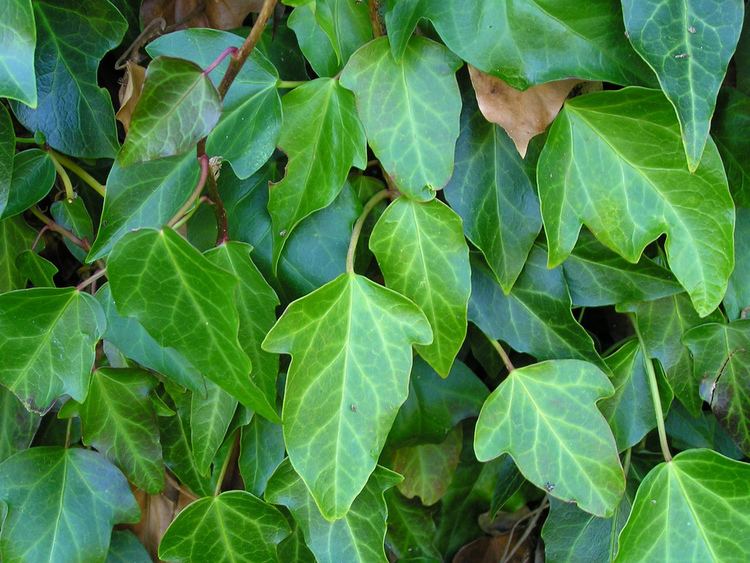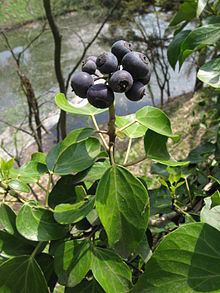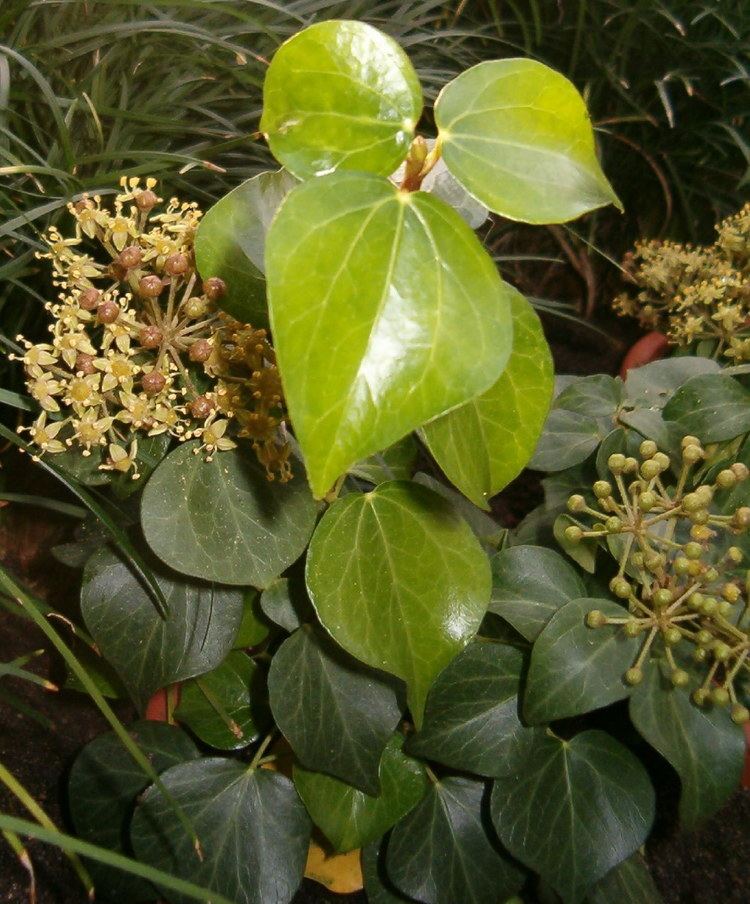Higher classification Ivy | Rank Species | |
 | ||
Similar Ivy, Araliaceae, Asiatic jasmine, Ardisia japonica, Disporum smilacinum | ||
Hedera rhombea, or Japanese ivy or songak, is a species of ivy (genus Hedera) which is native to the coast of East Asia and some islands of east Asia. It is a plant of botanical family Araliaceae. Formerly named Hedera pedunculata, some sub-species could be subsequently classified as a distinct species. It is quite common, and lives in slopes rock, soil, trunks of trees especially in Laurel forest, a type of cloud forest.

( Hedera rhombea) from Japan, South Korea, coast of norther Korea, islands between Korea and Japan, coast of China and Taiwan Island, is an evergreen climbing plant, growing to 10 m high where suitable surfaces (trees, cliffs, walls) are available, and also growing as ground cover where there are no vertical surfaces. It climbs by means of aerial rootlets which cling to the substrate. It is an evergreen wood vine or shrub or bush perennial climbing 10 m length, with aerial roots. Stems are green, poisonous if eaten and having irritating sap.

The leaves of Hedera rhombea are medium green, rhombic diamond shaped leaves that give to H.rhombea its Latin name. leave have petiole, is glossy and dark green. The bisexual flowers are yellow-green having 4-5 ㎜ diameter. Different kinds of flowers, small, greenish-yellow, gathered in large numbers in erect umbrellas, and the fruits, ripens in black, having round shape. It is cultivated in gardens and used in floral arrangements.

Taxonomy

In 1976, this ivy was mentioned in a chromosome study by McAllister. There it is named Hedera pedunculata that he does have an uncertain status, but an author of the East Asian flora identifies it as Hedera rhombea var formosana or rhombea. There is also a presumption that Hedera rhombea pedunculata could be a synonym for Hedera rhombea 'Pierrot'. It is interesting to remark: "Rhombea is now divided by all modern writers in Japanese and Taiwanese." Hugh McAllister & Alison Rutherford in 1983 provide Hedera pedunculata from Südyajima, Japan, in her article "The Species Of Ivy" No.4 firmly in the "Ivy Journal Vol.9, that this differs from Hedera rhombea. It is regrettable to learn what not.

In trade, the plant is not found, it seems not to be in the 2008 PPP index, the online Plant Finder for Europe by Ulmer Verlag Stuttgart. Nevertheless, without further information it is listed as 2008 Hedera rhombea f. pedunculata in the website ZipcodeZoo, Bay Science Foundation, Inc., USA. The checklists on the Internet wiedersprüchliche give details of the correct name. 2005/2010 will be used in the International Plant Names Index (IPNI) Hedera pedunculata, while in 2006 Catalogue of Life - Annual Checklist viewed, Hedera pedunculata as a synonym of var rhombea rhombea, also in 2010 Global Biodiversity Information Facility. All in all, are not information describing the ivy and to emphasize the difference between H. rhombea rhombea and H.rhombea formosana.

A clue to the origin of the plant is found in the Hu Card Index of the Flora of China website. The Hu Card Index is a compilation of index cards of Chinese names of plants, which Dr. Hu Shiu-ying from the Arnold Arboretum of Harvard University has put together. This could be Hedera formosanan Masumura in 1912 by "Index Plantarum Japonicarum II 2, 419" have been described for the first time. The Latin inscription indicating a mature form, they are mentioned as broad lanceolate to almost rhomboid leaves and explains the features of the flowers. Though, is also a weak tendency to form five lobes.
